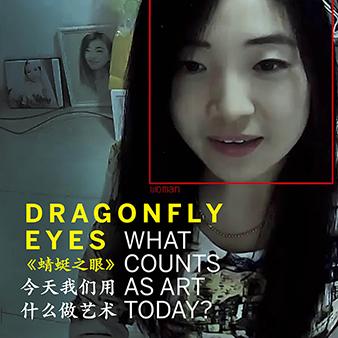
News
Summers Will Not Finish Semester of Teaching as Harvard Investigates Epstein Ties

News
Harvard College Students Report Favoring Divestment from Israel in HUA Survey

News
‘He Should Resign’: Harvard Undergrads Take Hard Line Against Summers Over Epstein Scandal

News
Harvard To Launch New Investigation Into Epstein’s Ties to Summers, Other University Affiliates

News
Harvard Students To Vote on Divestment From Israel in Inaugural HUA Election Survey
Artist Xu Bing Introduces New Forms to Contemporary Art

“We’re going to be engaging in a dialogue,” contemporary Chinese artist Xu Bing said (translated by Joy Chen to English). So opened Bing’s discussion titled “Dragonfly Eyes: What Counts as Art Today,” hosted by the Kim and Judy Davis Dean’s Lecture in the Arts series at the Radcliffe Institute for Advanced Study.
During this talk, which took place on Oct. 16 at the Knafel Center, Bing foregrounded the theme of language in his work. He is perhaps best known for his mixed-media installation “Book From the Sky,” which earned him the MacArthur Foundation grant in 1999, and contains 4,000 invented Chinese characters — none of which actually mean anything. Bing noted that he is interested in icons and emojis that have the essence of language, because such pictographs are equally inaccessible to everyone.
At the Knafel Center, Bing thus introduced the audience to some of his pieces, walking them through his growth as an artist. He received his education in the People’s Republic of China and moved to the United States in 1990. Bing characterizes his art as “global” due to the clash he creates between language and culture. He is formally versatile, creating sculpture, mixed-media, and (most recently) film. The former vice president of the Central Academy of Fine Arts (Beijing), Bing is now an Andrew D. White Professor-at-Large at Cornell University, as well as a professor at the Central Academy of Fine Arts in Beijing.
After orienting the audience to his œuvre, Bing screened the trailer to his latest work, “Dragonfly Eyes” (2017), which the Harvard Film Archive had also screened the previous evening as a prelude to this talk. The film synthesizes 11,000 hours of surveillance footage into an 81-minute piece, which Bing dubs a unique sort of “narrative fiction,” since every frame of it actually happened.
Dean Tomiko Brown-Nagin of the Radcliffe Institute for Advanced Study praised “Dragonfly Eyes” in her introductory remarks, noting the “status of the image in an era of omnipresent surveillance.”
Bing emphasized the novelty of the form: Never before had an artist used surveillance footage as a medium in this way. “It’s about taking this limitation and then transforming it into something special,” Bing said, thematically linking “Dragonfly Eyes” to his earlier experiments with the confines of language.
A question and answer session followed Bing’s presentation, featuring two Harvard Professors — Asian art professor Eugene Y. Wang and Director of the Arts at the Radcliffe Institute and History of Art and Architecture Jennifer L. Roberts.
Wang reacted to the film’s quality of touching each viewer, saying that we all share this anxiety about the rapid changes in technology. In this era of surveillance, Wang said, what starts off as a private moment can so easily turn public.
“It really compels us to rethink that kind of demarcation of the private and public that we used to take for granted, and that now you can see is completely inverted,” he said.
Wang has known Bing for nearly two decades, having written a book entitled “Of Text and Texture: The Cultural Relevance of Xu Bing’s Art,” published in 1995. “It’s very gratifying to see ‘Dragonfly Eyes’ as a new breakthrough,” Wang said.
Other fans of Bing’s work reacted similarly. Fay Hannon was an audience member who had been interested in Bing since encountering his “Phoenix” exhibition at St. John the Divine in New York. This piece, like most of Bing’s, reimagines and restages readymade material in an effort to give the viewer new insight. Hannon described Bing’s monumental, recycled works as “totally awesome, totally different.”
Roberts closed the discussion by asking Bing about the future: Where did he think he would take his art next?
Bing said he doesn’t know, but that is the excitement of mixed-media forms: There are “so many places for inspiration.” He expects to transform old forms so that they offer insight into the present moment, adding, “I’m confident that I have something to say.”
Want to keep up with breaking news? Subscribe to our email newsletter.
